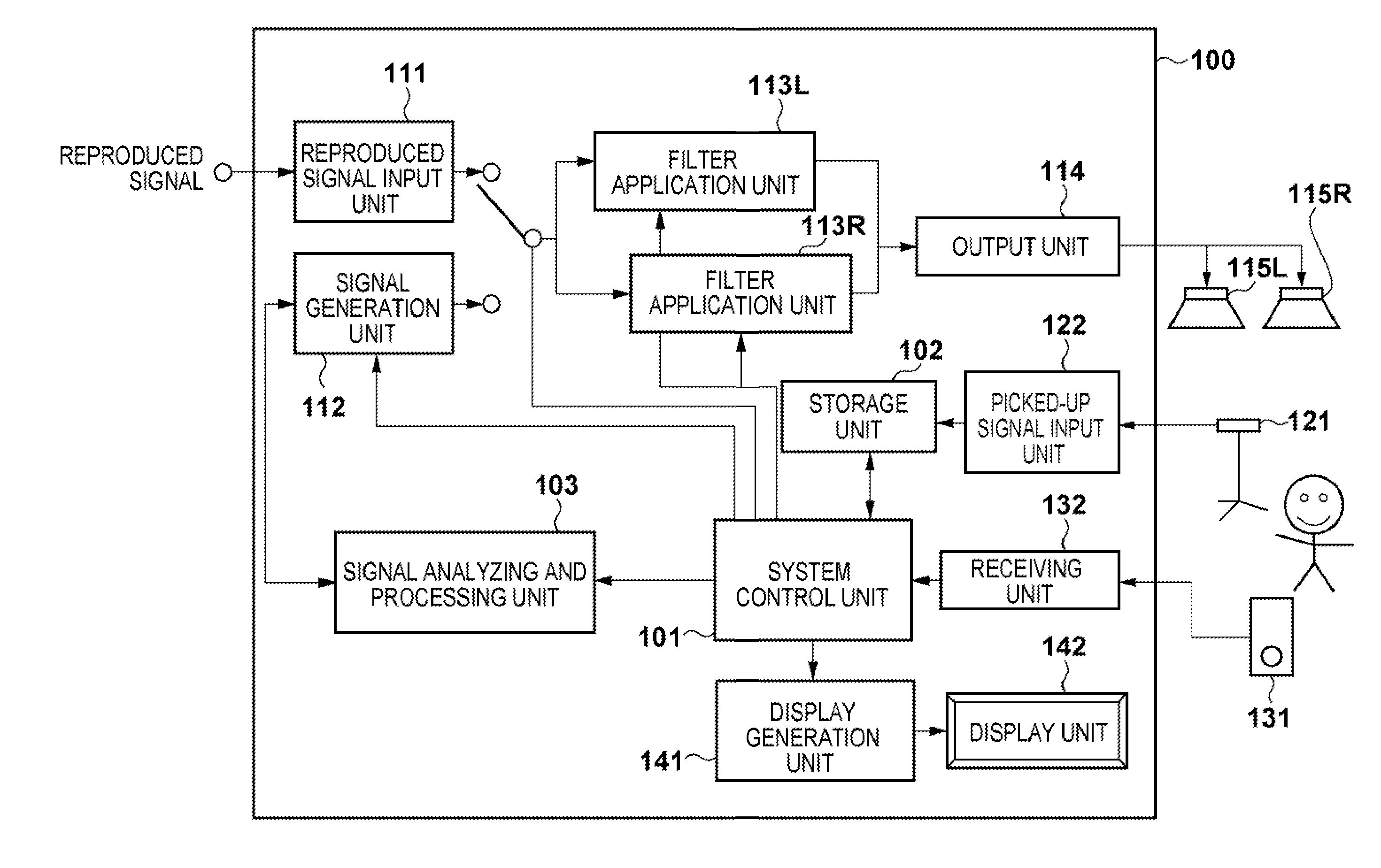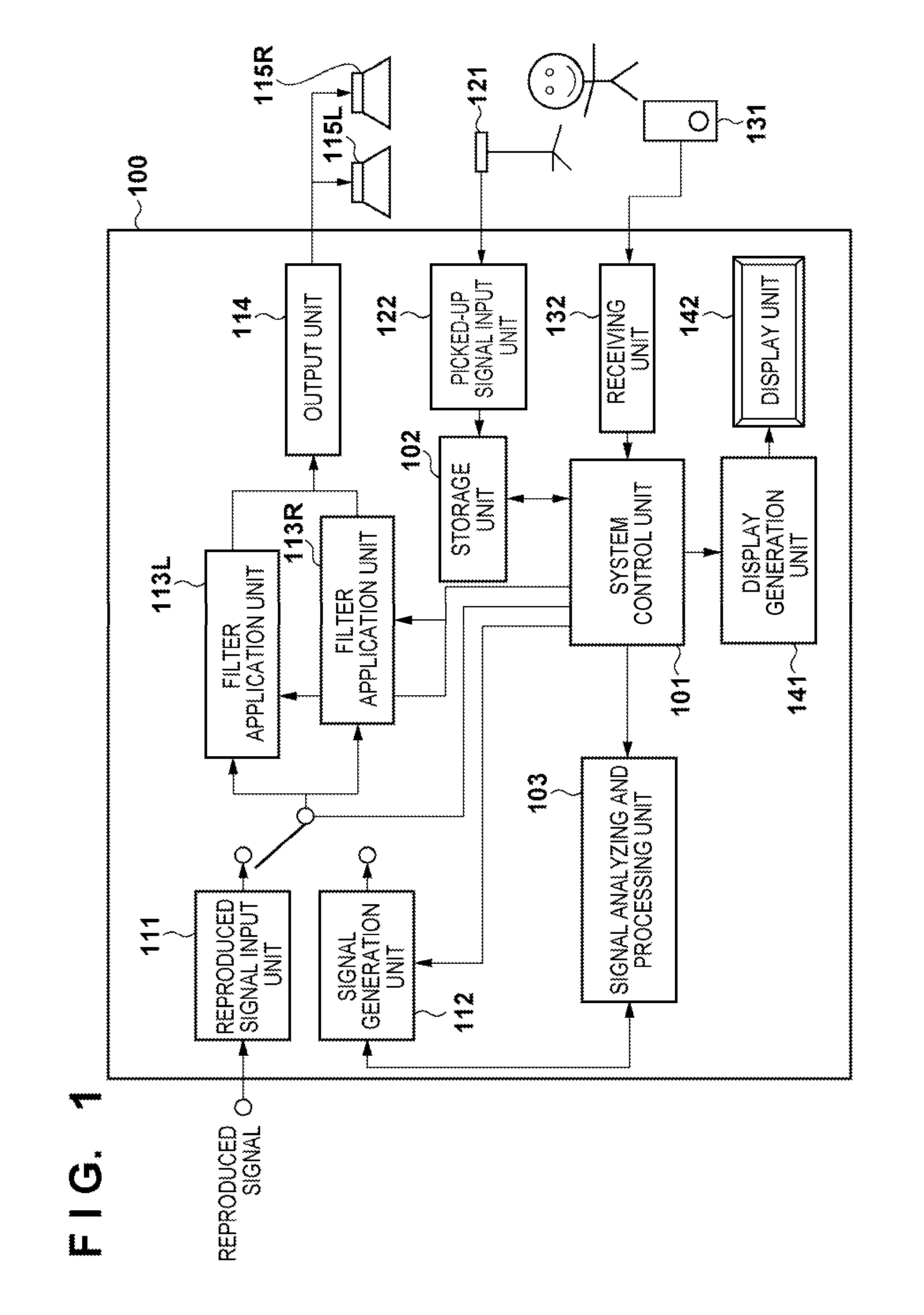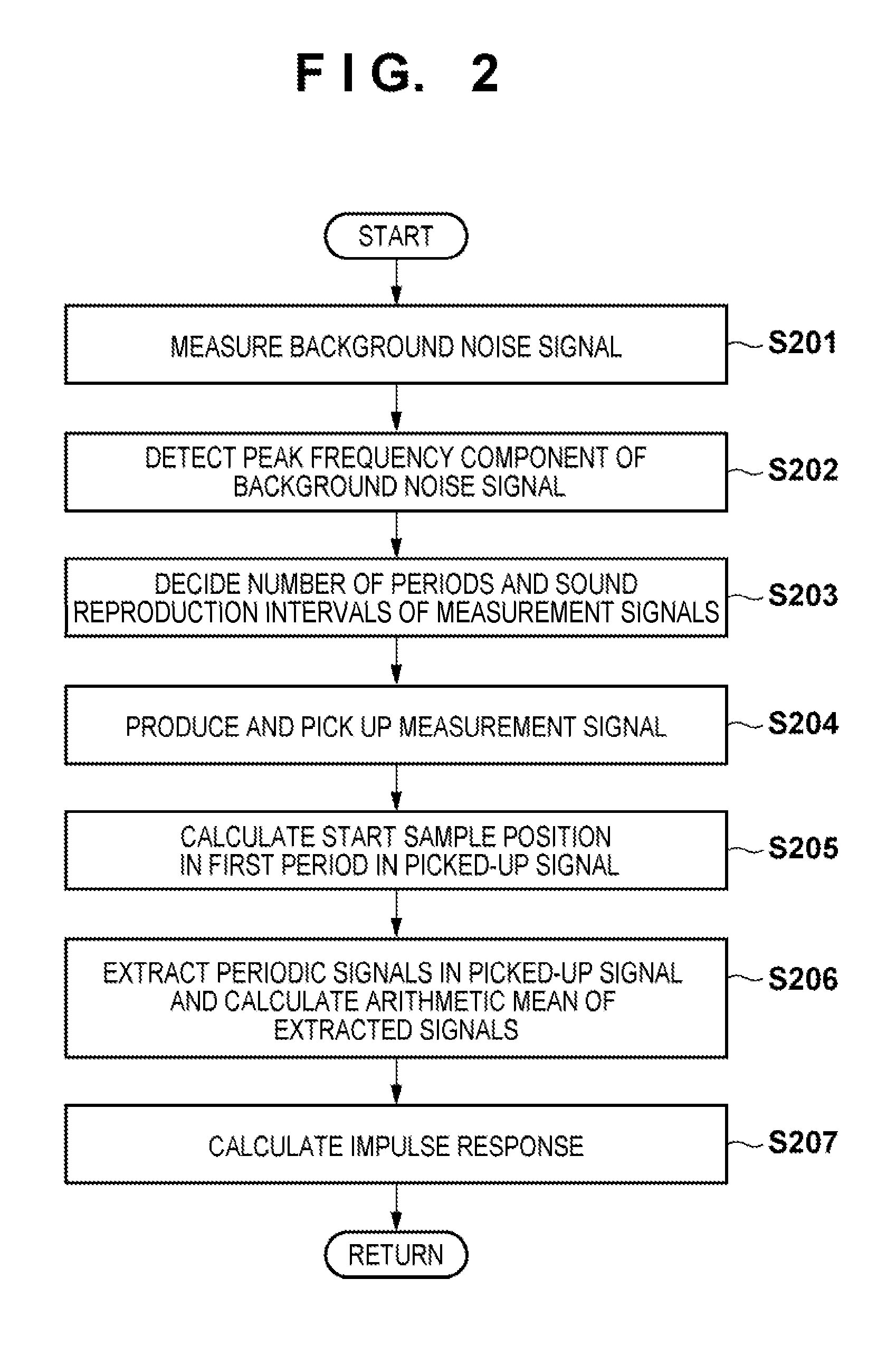Acoustic apparatus
a technology of acoustic equipment and acoustic frequency, which is applied in the field of acoustic equipment, can solve the problems of increased possibility, noise generation from noise sources, and deterioration of the s/n ratio of a signal picked up by a microphone, and achieve the effect of accurate impulse respons
- Summary
- Abstract
- Description
- Claims
- Application Information
AI Technical Summary
Benefits of technology
Problems solved by technology
Method used
Image
Examples
first embodiment
[0040]FIG. 1 is a block diagram showing the arrangement of an acoustic apparatus according to the first embodiment of the present invention.
[0041]The acoustic apparatus shown in FIG. 1 includes a controller 100 as a main unit. The controller 100 includes a system control unit 101 which performs overall control of the apparatus, a storage unit 102 which stores various data, and a signal analyzing and processing unit 103 which analyzes and processes a signal. Elements that implement the function of a reproduction system include a reproduced signal input unit 111, a signal generation unit 112, filter application units 113L and 113R, an output unit 114, and speakers 115L and 115R as sound sources. Elements which implement the function of a sound pickup system include a microphone 121 and a sound pick-up signal input unit 122.
[0042]As elements for accepting command inputs from the user, this apparatus further includes a remote controller 131 and a receiving unit 132. Elements for present...
second embodiment
[0093]In the first embodiment described above, since n independent sound reproduction intervals tk (k=1 to n) are introduced for n peak frequencies fk (k=1 to n), measurement signals in 2n periods are required.
[0094]The second embodiment searches for sound reproduction intervals that allow to collectively process a plurality of peak frequencies as one processing target. That is, this embodiment regards n peak frequencies as m processing targets which are smaller in number than the n peak frequencies, and introduces m independent sound reproduction intervals to suppress the number of periods of measurement signals to 2m, thereby shortening the measurement time.
[0095]The basic principle of the present invention is that when calculating arithmetic mean of two signals, the interval between the two signals is controlled to cancel out a target peak frequency component of a background noise signal completely in theory. Consider a theoretically maximum amplitude A as an evaluation index for...
PUM
 Login to View More
Login to View More Abstract
Description
Claims
Application Information
 Login to View More
Login to View More - R&D
- Intellectual Property
- Life Sciences
- Materials
- Tech Scout
- Unparalleled Data Quality
- Higher Quality Content
- 60% Fewer Hallucinations
Browse by: Latest US Patents, China's latest patents, Technical Efficacy Thesaurus, Application Domain, Technology Topic, Popular Technical Reports.
© 2025 PatSnap. All rights reserved.Legal|Privacy policy|Modern Slavery Act Transparency Statement|Sitemap|About US| Contact US: help@patsnap.com



